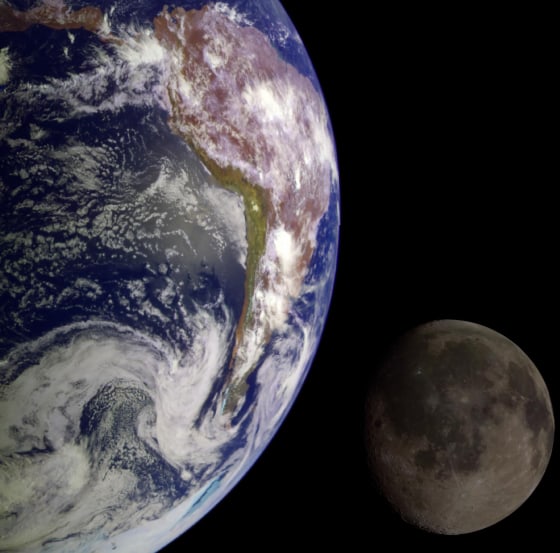If you’ve ever wished for longer days so you can get more done, a recent study offers a measure of good news. It shows that as the moon slowly spirals away from Earth and our planet’s rotation slows, days are growing longer.
Only they’re not growing longer very fast. In fact, days are lengthening by only 1.8 milliseconds a century, said Stephen Meyers, a geoscientist at the University of Wisconsin and a co-author of the study. At that rate, it will take more than 3.3 million years just to gain an extra minute.
Scientists have long known that the length of a day on Earth is governed in part by the gravitational forces between Earth and the moon, which Meyers said is moving away from our planet at a rate of about 3.8 centimeters (1.1 inch) a year — or about as fast as our fingernails grow. As the moon moves away, “Earth is like a spinning figure skater who slows down as they stretch their arms out,” he said in a written statement.
But scientists weren’t sure exactly how long days lasted in the distant past or how day length is changing now. To find out, Meyers and his collaborators used a new statistical tool known as astrochronology to analyze samples taken from a pair of ancient rock formations: the 1.4-billion-year-old Xiamaling Formation in northern China and the 55-million-year-old Walvis Ridge formation in the southern Atlantic Ocean.
Astrochronology combines geological data with astronomical theory to reconstruct the solar system's turbulent history.
“By studying the rock record, we can look back in time and reconstruct climate systems,” Meyers said. “The rock record has proven to be absolutely essential to understanding how the climate system works, how ice ages happen and the instability of ice sheets.”
And by looking closely at how Earth's climate has changed over time, the researchers were able to make inferences about how the moon's proximity to Earth shifted over time — and how those shifts affected the length of days on the planet. Their analysis showed that the moon was moving away from Earth more slowly in the distant past — and that 1.4 billion years ago, a day lasted only about 18 hours.
Bruce Betts, chief scientist at The Planetary Society in Pasadena, California, called the new research “exciting.”
“There’s so much uncertainty when you’re looking at rocks that are over a billion years old, so using any kind of statistical process to decrease your error is going to be helpful,” said Betts, who was not involved in the study. “Understanding things like the Earth-moon dynamic helps us understand things that affect life, things that affect climate. And that helps us understand the past, but also gives us a better understanding of the future.”

